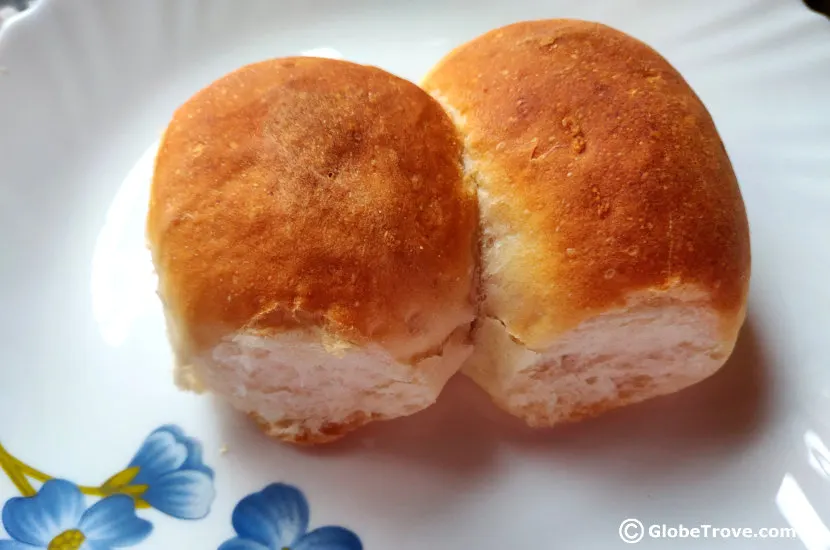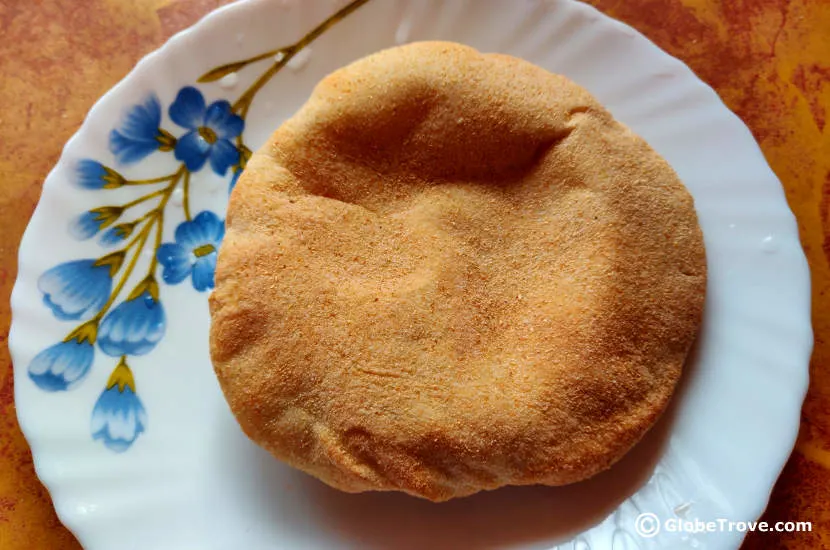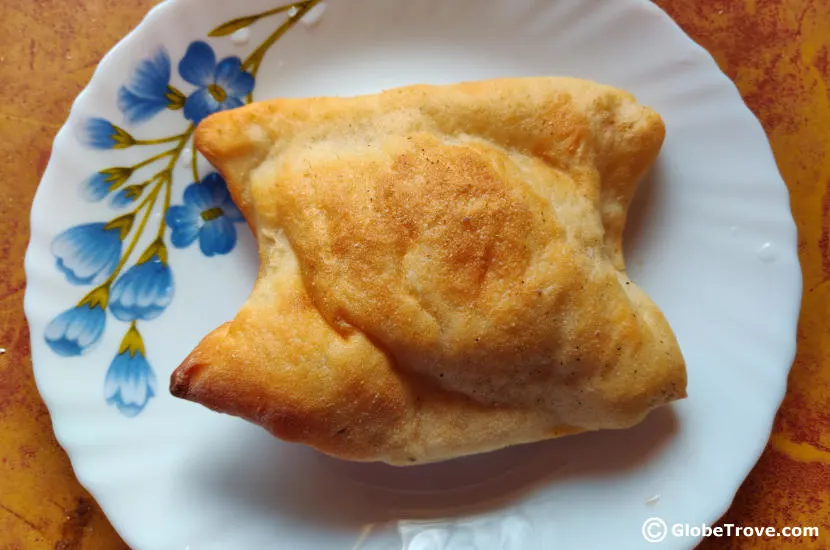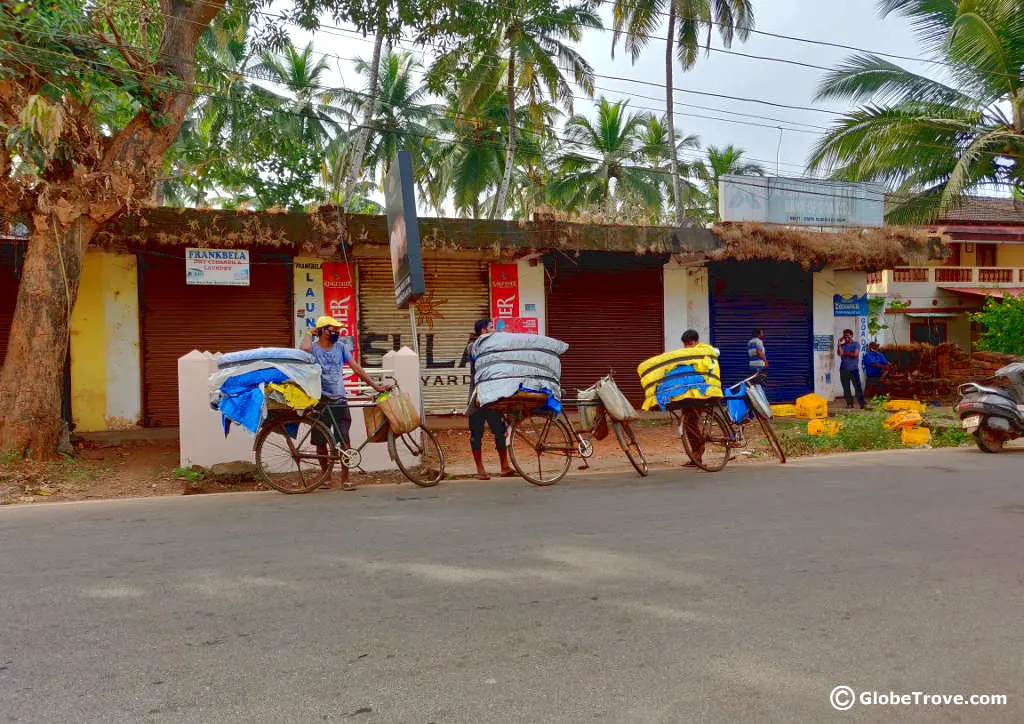India is known for its different kinds of traditional bread that are available across the country. From Pooris to Parathas and so many other varieties in between, there is a lot for your palette to explore. The little state of Goa has its own delicacies to offer. Few however are aware off/talk about the varieties of Goan bread that are available. Fewer travellers still will stumble across the famous Goan Poder. In fact, it has featured in one of my previous articles about the sights and sounds of Goa before but I thought I would enumerate on it a bit further.
The Goan Poder
The Goan Poder has been an iconic figure for decades. The ‘Poder’ or the ‘bread maker’ is someone that people wait for both in the morning and the evenings. If you think that the Goan Poder sits quietly in a bakery or in a shop, then you are sorely mistaken. Every morning, you will hear the well-known ‘ponk… ponk… ponk…’ of his horn as he makes his way through the villages with his wares. You will find everyone hurrying out to catch him for their daily quota of bread. There is nothing like the taste of that first bite!
Initially, the Poder would carry his wares in a woven basket attached to the back of a cycle. Today many of them have moved onto motorbikes. The woven basket filled with local bread however still remains the same. Even the iconic chime of the horn has not changed.
Spotting The Goan Poder
While there are a couple of places where you can get the local Goan bread throughout the day, the Goan Poder can be spotted either in the mornings or in the evenings. Their route is marked as clear as clear can be. He knows which houses buy from him and they know what time he will pass their way. In fact, you could almost set a clock by him.
While there are many bakers who make their route through the villages, each one has their own demarcated time, so they do not clash with each other. The sound of the horn in the distance alerts everyone to their arrival and you can catch a glimpse of everyone lining up at their house compound walls to buy their day’s supply of bread.
The morning rounds are not the only time that you can catch sight of the Poder. You can hear him making his way through the streets in the evening too.
The Goan Bread Aka The Goan Pao

The most common Goan bread is the Goan Pao / pav.
If you head to Goa and ask about the local Goan bread, you will find that everyone refers to it as pao/pav. Don’t let that fool you. There isn’t just one kind of pao to be tasted. In fact, you will find that everyone has their own preference to which one is best.
The most common version of pao looks almost like a bun (but doesn’t taste like one). It has a soft golden top and fluffy soft inside. Another point of difference between the pao and the bun is that it isn’t sweet, and it is more cube shaped than round. A couple of people prefer a slightly different variant of this known as the ‘kadak’ pao. This has a hard top but a soft fluffy inside.

Another popular Goan bread is the poie.
Then you have the Poie. This is the whole wheat healthier alternative that is relished across the state. The Poie is round and sort of hollow in the inside. It is definitely heavier and more filling than the pao. I remember craving bread during my pregnancy but since I was diabetic it was hard to put anything in my stomach that wouldn’t take my sugars up.
The Goan poie was my saving grace. A fun tip regarding the poie (and the pao) is on how to upgrade your yesterday’s unfinished quota. Just toast it on an open fire like a marshmallow. When its done, slice it and apply a generous helping of butter. The taste is divine!
So, what do the poie and pao pair well with? Almost everything! Most frequently you will find them paired with pao bhaji. The Goan way of doing this is a little different from the Bombay pav bhaji that it is equally popular. Here the bhaji (vegetable) comes in a variety of options. Sukhi bhaji (dry vegetable mix) which is usually made of potatoes and ‘Patol’ bhaji which is a vegetable in gravy and is usually made of dried peas or a lentil.
For those who cannot make up their mind like me, there is a mix bhaji where you get served half and half. These however are options that you will find in a local tea stall. At home, you will find that the locals pair it up with everything from curries, fish, meats, vegetables to the burgers and sandwiches that we as Goans known and love. Oh did I mention that it is also a popular accompaniment for Ross omelet?

The famous Katricho Pao.
Another version of the pao is called the Katricho Pao. This particular version gets its name from the scissors (Kator) that is used to shape it. Its unique butterfly shape is hard to miss. These Katricho Pao are popularly used for cutlet pao and the likes. My favourite involves a fried beef fillet filling.
How Has The Goan Bread Fared In The Current Slice Bread World?
Making Goan bread is an art. Slice bread wasn’t much of a thing in the decades gone by though it has become relatively popular. I think one of the reasons why it is popular is because it is convenient. People stop by at a neighbourhood grocery store and pick up a packet. This is especially true when it comes to the cities. The love for the Goan bread itself has not evaporated. Given a choice I think that most people in Goa would choose the latter.
*This post contains Affiliate links


Krista
Saturday 19th of December 2020
That bread is making me very hungry! I love fresh bread, and the fact that someone walks around and delivers it to you is so cool! I love the story behind it as well.
Nisha
Friday 18th of December 2020
Never heard of this. Looks like will have to go to Goa again! :)